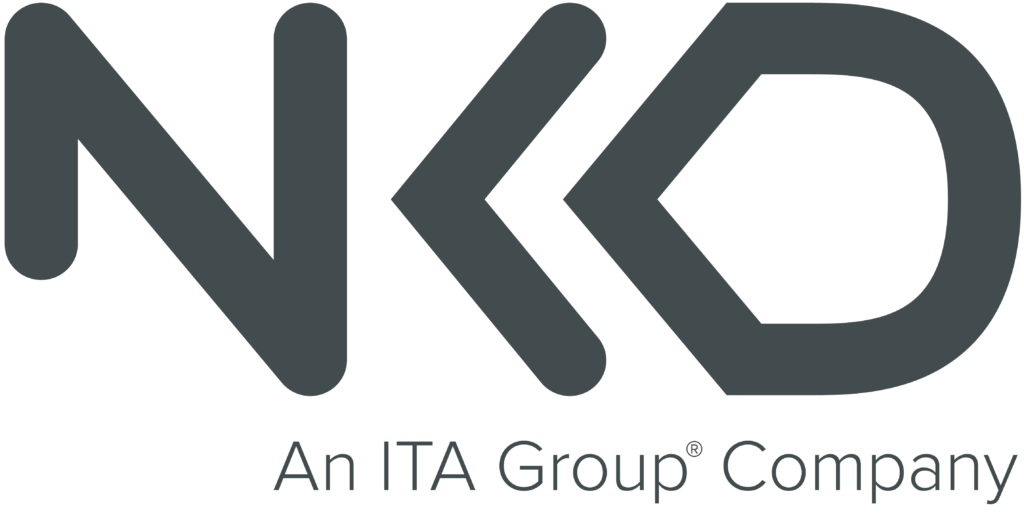OUR DELEGATES
Carol Stuart, Head of HR – CAF Bank
Andy Savage, HR Director Europe – NSK
Heather Garrett, Group HR Director – ACS International Schools
Michael Faulkener, CEO – NKD
Gudrun Neumann, Global People Director – BMT Group Ltd
Monika Holliday, Global People Partner – Sky
Bec Lilley, Director of Solutions – NKD
Sarah Fox, Director, COO – The Hyphen Group Ltd
Nick Wright, People Director (Clean Energy) – Ricardo
Claire Lock, VP of HR International Markets – UKG
Glenn Milton, Head of Resourcing – BUPA Dental Care
What does Leadership look like in a hybrid working world? Look closely and many Leaders have traditionally tended to adopt a modified and seemingly more flexible version of the traditional command and control management style. But now, Leadership in a diverse and hybrid world requires true flexibility and reactivity, which allows for risk-taking and autonomy through open communication, empowerment and constant adaptability.
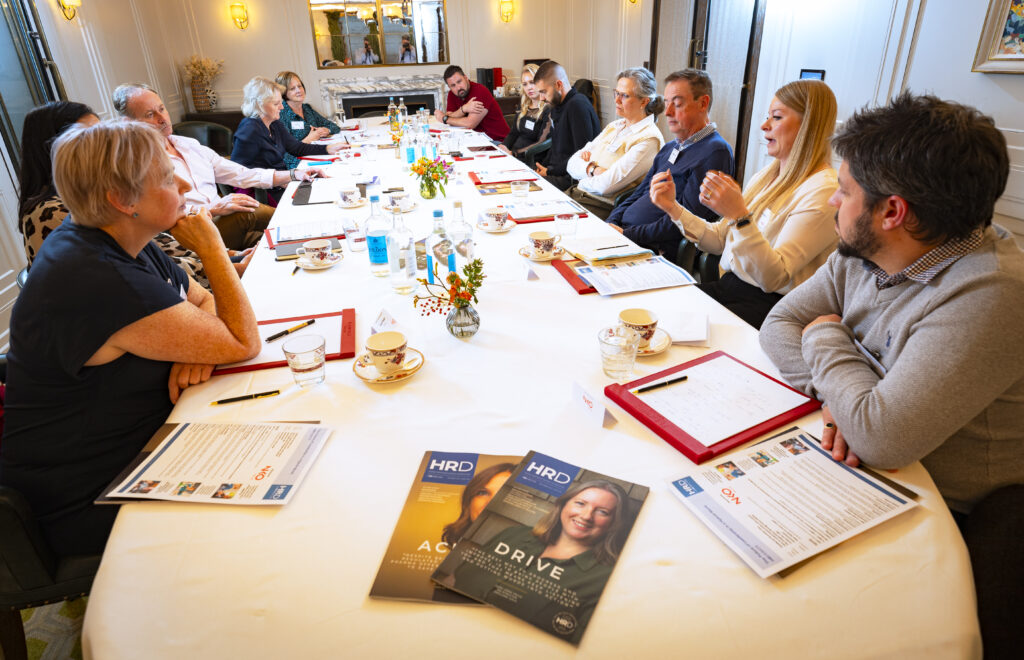
HOW ARE YOUR LEADERS REACTING TO ACCELERATED CHANGE, EVOLVING ATTITUDES TO WORK AND THE EVER-CHANGING SKILLS GAP?
Monika Holliday: The speed of change means that being reactive is no longer enough, leaders must be proactive. What is your three-to-five-year strategy? What are the skills that research is telling us that we need?” That’s how we need to be preparing, not plugging the gaps for a short-term fix and relying on contractors who leave with their knowledge and capabilities.
Andy Savage: Future leaders need to prepare for the next big shock and that requires preparation, predicting, reacting and adapting in time to stabilise the business and having the right people for that moment in time, who are prepared and resilient.
Heather Garrett: We need to build trust and confidence that allows for people to be more empowered and able to run teams, having more adult conversations. Our education faculty leaders join the profession to teach, then they suddenly find themselves up the hierarchical ladder and they’re actually not teaching at all anymore. I think some of that is about understanding and setting out the road map for talent and leadership development.
Gudrun Neumann: In consideration of the unpredictability and speed of change in running a business today, we must be mindful of the pressures on leadership and make sure they feel they are supported, and have the requisite skills and capabilities and are they being looked after.
HOW HAS CULTURE CHANGED FOR LEADERSHIP IN THIS FAST CHANGING ERA OF HYBRID AND REMOTE WORKING?
Nick Wright: Culture is really interesting in the context of remote working, where we transitioned very quickly from it being a bit of a “white-collar privilege”, to a much broader remit and now it also represents a benchmark in equity. But there is inevitably a period of adjustment, as the new parameters are tested.
Carol Stuart: In terms of culture, it’s still about purpose, trust and equity and those three factors are essential to successful hybrid working. We also need to be proactive.
Sarah Fox: We cannot assume that people at home are fine and we must affirm our responsibility for their wellbeing. How we engage with employees is crucial and we must not expect people to come to us, leaders and managers have to go into their world and meet them at their level.
Michael Faulkner: A telling question to ask leaders is; “when did you last adapt well?” Almost always they say, “when we were faced with the reality and implications of COVID-19.” Dig deeper and they say that they felt like “we all had each other’s back”, that they were adapting as they went and nobody knew for sure what to do, because it was unknown territory. It was a great leveller and the usual bluster and ego was replaced by collaboration and understanding. It’s that mindset that we need to nurture.
Bec Lilley: Right now, the tension between short-term versus long-term is profound and leaders are navigating in a more dynamic and changeable world, without the black-and-white and binary surety of the past. This means that leaders have to dig deeper into their emotional reserves, to elevate empathy, understanding and pragmatism and be more collaborative than instructional, moving away from command-and-control. Honesty and vulnerable are the requisite standards in the hybrid and flexible worlds and promoting flexibility as a way for individuals to balance their wellbeing and work/life balance perspective.
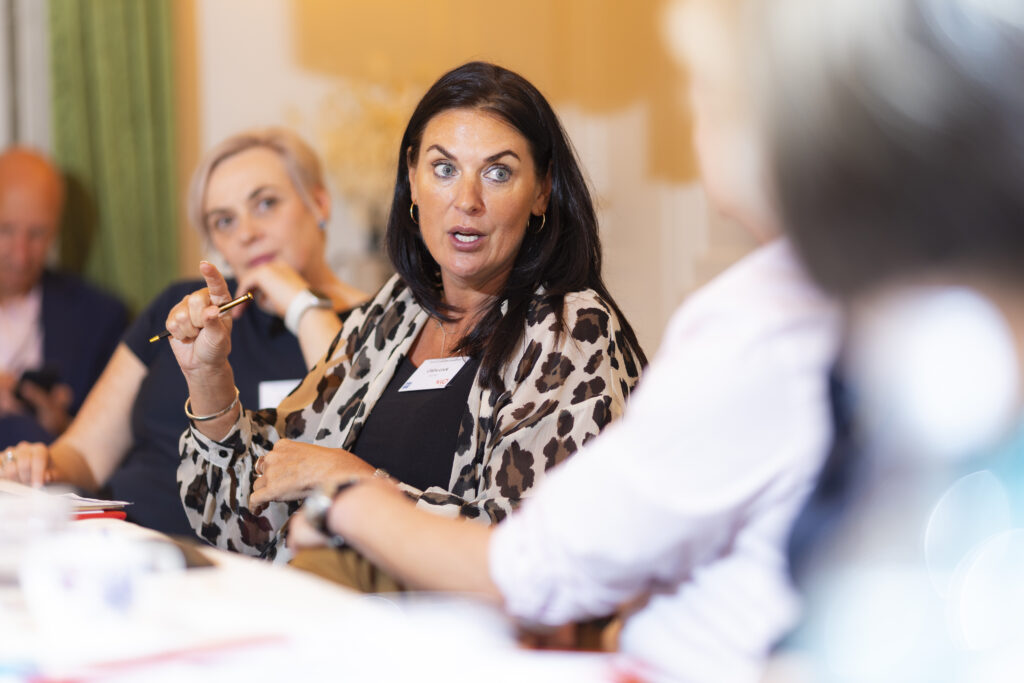
HOW DO YOUR LEADERS NAVIGATE GENERATIONAL VIEWS AND BEHAVIOURS ACROSS THE MULTI-GENERATIONAL WORKFORCE?
Heather Garrett: Leaders need to consider that across the demographic, one-sizedoesn’t- fit-all. Across generations, different cultures and circumstances, employees have different views and expectations of the employment relationship. From a people management perspective, this greater dynamic through diversity requires extra consideration around employee expectation, but it is part and parcel of capitalising on diversity of thought and experience, so essential to competitiveness.
WHAT NEEDS TO BE CONSIDERED TO MEET THE NEEDS AND EXPECTATIONS OF THE NEW GENERATION THAT HAS ENTERED THE WORKPLACE SINCE THE PANDEMIC?
Claire Lock: Our new office in Noida India is a really interesting case study, where the average age is 26-to-28, in a location that is growing rapidly. Adaptive leadership capability is critical and so in this instance, investment in training to build bench strength leader and line management is fundamental.
Glenn Milton: In our area, dentistry, things are changing very fast, presenting challenge and opportunity. The new generation of dentists coming through only want to work three-to-four days a week, they work across multiple locations and a variety of revenue streams and they build their reputation through TikTok and Instagram to grow their customer base. We are changing how we work and the tools we use, with new approaches and an organisational mindset that is in tune with this.
Gudrun Neumann: Our latest graduate intake is more self-confident, more demanding and more challenging – in a good way – than previous generations. We have struggled a bit with a certain sense of over self-entitlement, but this is only a natural as result of their culture, their lived experience and the fact that they are better informed through social media and these are traits that can be capitalised upon.
Monika Holliday: I’m a product of a grad scheme and I would concur that there is this heightened sense of entitlement – an expectation to supercharge career progress – along with a certain confidence to challenge existing ways of doing things. That obviously presents challenges and opportunities and there’s definitely a greater need for a pragmatic approach.
Nick Wright: The power of social media cannot be overstated in relation to younger generations in terms of communication and messaging. Also, COVID has had a massive influence and there is a need for a different starting point and set of expectations from this cohort.
Sarah Fox: They want their employer to make a difference and to benefit the wider stakeholder. ESG is such an important and relevant topic and people want to work for companies that align with their values and make a positive impact. They are challenging their organisations and business leaders.
Bec Lilley: We have to be careful not to stereotype. We need to understand that while some will be looking for short-term, others will interested in long-term prospects and career development and so we shouldn’t assume people’s mindsets. Reverse mentoring has been discussed today and it has to be said that there are older employees that are concerned about being superseded, that their skillset is no longer relevant and so the importance of mentoring up and down the demographic cannot be overstated.
Michael Faulkner: There is a sign that there is a hardening of attitudes to the level of support and flexibility employees should expect. In our recent research, there was a rising opinion that businesses were having to deal with a generation of snowflakes. But the reality is that before, there was an ‘always-on’ work culture that was a rising problem, with huge cost to businesses. Future success is predicated on mutual understanding and support and leaders have a duty to role model a sustainable way of working.
IS YOUR ORGANISATION FOCUSED ON OUTPUTS AS OPPOSED TO INPUTS AND ARE YOUR LEADERS PROVIDING CLARITY AND DIRECTION?
Gudrun Neumann: By and large, we do measure more by outputs than inputs. We’ve invested a lot in leadership development around that topic and the shift to hybrid working has influenced this, so that everybody works to their own schedule. The only challenge is around billing clients by the hour, which needs to be considered.
Nick Wright: Similarly, from a consultancy perspective, we have billable hours and we aim to present this as an output – we need people to achieve this level of billability to a client – but we have a very flexible culture as to how this is done.
Glenn Milton: We have clear KPI functionally and my team knows what they need to do to be successful. If anyone wants to go for a walk for their wellbeing, then there shouldn’t be a problem with that.
Claire Lock: Agreed, attending meetings for the sake of attending meetings is not an effective way of measuring outcomes. Having a clear vision, mission, values, defined culture, metrics, cadence, actions and tactics moves the dial and, regardless of how busy we are, bringing the team together brings cohesion, particularly for factions of the business that are not close, but have important overlaps.
Michael Faulkner: Some delegates today represent international businesses and we have to be mindful that where employees are working remotely, setting their own schedules, that they don’t feel compelled to cover territories that are out of sync timewise.
Monika Holliday: In media, it is very much a balance of input and output and meetings are part of the culture. But there can be a compunction to attend every meeting, because that is the legacy and that requires real adjustment, because it’s just not practical and can be counterproductive. People should have the confidence to decide whether they need to attend or not and, if are you adding any value.
Claire Lock: If you are too output focused you can become too task fixated.
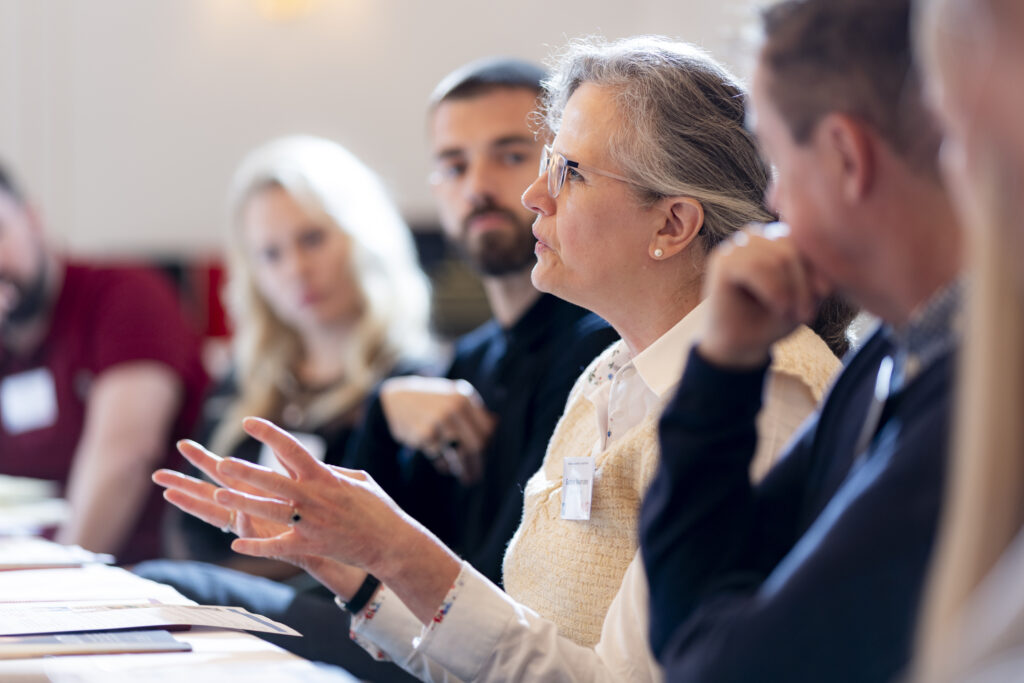
IS PRESENTEEISM A CULTURE ISSUE, LEGACY FROM THE PAST?
Michael Faulkner: Everybody being in the office is not tenable and as we have discussed today, we need a different style of leadership to handle that. Businesses need to create a narrative around their strategy, that is compelling and repeatable, so that everybody can understand their role and objectives. In a hybrid and remote setting, people need to understand how their contribution fits into the bigger picture and they need to be able to engage on a practical level.
Nick Wright: Technology compells us to be always-on. If emails are flying around late at night, there can be pressure to join in. Constant connectivity also goes against people becoming more autonomous and self-reliant.
Claire Lock: I strongly believe that values, culture and shared vision are what bring people along on the journey. Convention or hybrid, what brings people together is that those that play together, stay together. I really do feel that so much can be solved with respectable, professional and cohesive relationships and being present in person.
Michael Faulkner: Agreed, the first step for leaders and managers is, know your people and, with connectivity and understanding comes openness and candour. One real case study was a group of employees complaining they were burnt out, but their company retorted with the observation that they we’re not as productive as they needed to be and not hitting targets. The obvious question was, where’s the disconnect here? Exploring further, what this remote working cohort was experiencing was loneliness and not work overload.
Bec Lilley: We need to consider that connectivity is different for different people – extroverts thrive on high connectivity, whereas more introverted people actually want to dip in and out of that. For some people, it’s a 30-minute check-in, whereas for others, it’s about coming into the office and spending some time with other colleagues. Building trust and psychological safety relies on short check-ins to keep people connected on a person-to-person level.
Heather Garrett: It’s taken as read that without connectivity, there is no collaboration.
Monika Holliday: One negative about an open-door policy is that it becomes a forum for you to solve other people’s problems. But a culture that turns the table and asks, how would you solve or improve the situation”, builds greater autonomy and problem solving.
HOW WELL ARE YOUR LEADERS ABLE TO SUPPORT OTHERS TO NAVIGATE THROUGH DISRUPTION AND CHANGE?
Monika Holliday: There is much talk about fear of failure and I would say that the perception around failure is something of a paradox and open to conjecture. There of course is the massive tech corps, who will invest in innovation, expecting failure. Then there is failure in highly regulated sectors or in firms with no tolerance for failure, where people can be constantly in fear, because of the ramifications.
Andy Savage: We have procedures and policies to follow and because of the length of time on a project, nothing is ever decided in one meeting, it’s always decided through ongoing discussion and lobbying, so there are checks and measures along the process. Because of the collective involvement, there’s a collective responsibility around failure, which creates a pragmatic mindset.
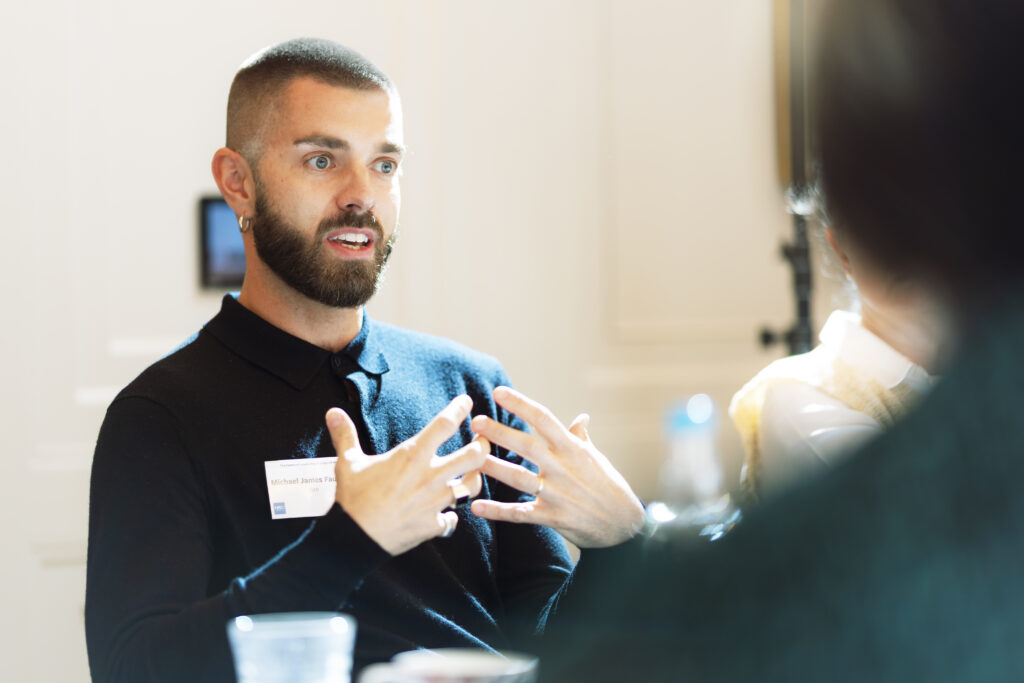
Michael Faulkner: In the past, there was a tendency to hire people that were compliant and pliable. But now I find myself looking for people that will question everything, are even a little intimidating and ask probing questions.
Nick Wright: In our business, take the rail certification services, that’s very process-driven, so you’re going to be operating very accurately and without risk. But by contrast, with digital products which are about creating and trialing new concepts, that is a different mindset, where they can iterate, try and fail and feel comfortable with that.
Claire Lock: That shows that context is key, but in general, if you can demonstrate that you are onboard with purpose and delivering value, then that builds confidence and trust, providing you don’t risk change fatigue through constant innovation. Also, I think in larger organisations, particularly siloed firms, toxic blame culture can sneak in, with one department blaming another.
Glenn Milton: There can be a culture where only good news stories are shared with boards, because everyone is scared to convey the reality. Being brave is one of our core values and we are encouraged to try the difficult and new, certainly in the tech space and, if it fails, we will learn from it.
Monika Holliday: Creativity, bravery, confidence and meritocracy is where innovation and diverse thought can thrive and also, businesses need to move away from being focused solely on profit and have a more pioneering culture to trial new ideas.
Gudrun Neumann: Agreed and a blame culture is insidious and really holds businesses back. We’ve discussed the need to trial and fail, but that freedom must come with accountability and self-responsibility and with that balance, there is a healthy culture of safety and risk that can really drive innovation.
Carol Stuart: Accountability is right at the heart of progressive business, along with safety, particularly in financial services. A case in point, when we were bringing a new banking platform online, we kept reiterating to testers that we wanted them to find and report on defects and try and break the system.
Michael Faulkner: It is important to differentiate failure from recklessness. If we consider failure as a concept of ‘ fail fast and learn quick’ – a concept from the tech industry around an iterative approach to failure – to adopt that in any business, we have to show people how to fail in a culture that supports psychological safety. I see it as a maturity ladder from freedom and courage, up the ladder to fail which is the maturest of all.
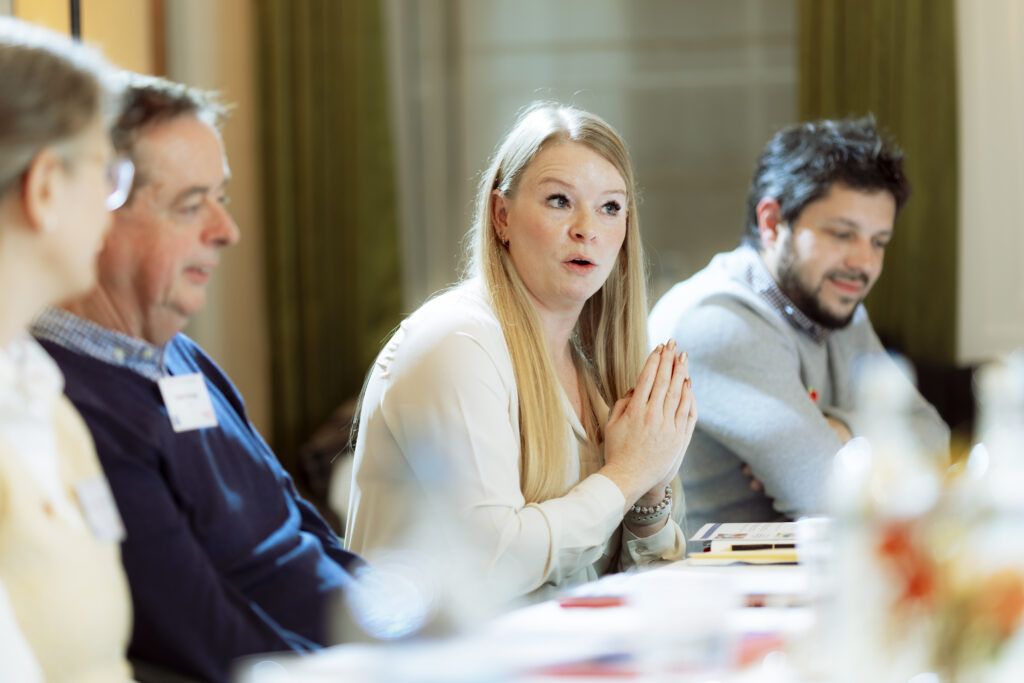
Bec Lilley: This isn’t a green light to recklessness and challenging bad behaviour, but I really buy into Kim Scott’s work on ‘radical candour’, which is the idea of allowing someone to fail while everyone is watching, is cruel. To coin the sporting mantra, “we win together, we lose together”. More than ever before, leaders need to give space to people, rather than to swoop in to rescue.
HOW DO YOU THINK AI AND AUGMENTED HUMANITY CAN BE USED AS LEADERSHIP TOOLS AND IMPACT AND CHANGE THE WAY YOUR LEADERS LEAD?
Glenn Milton: Our technology team has an MO up to 2027, as part of our strategy to harness the power of AI. Two ideas are, how can we leverage people’s time better, how can it enhance recruitment and build active talent pools and what richness and structure can it bring to plans for employee development?
Carol Stuart: We have seen an acceleration of AI – quicker than the laws to govern the use of it can come in – and we are thinking of our leadership development strategy and bringing in some tools that will help with online learning activities. We’ve a new platform and we’re training staff to use this.
Heather Garrett: AI as a time-saving tool holds real potential for people in sectors where time for human interaction is at a premium. AI is promising some great opportunities to free employees up for human connectivity.
Claire Lock: There is a risk of ‘you don’t know what you don’t know’, meaning you have to be in it to be a part of it. No business should treat it as an unknown, not just for competitiveness reasons, but employees will adopt their own in unregulated ways. Education and guardrails are key and there needs to be a clear understanding on what you should or should not be using it for.
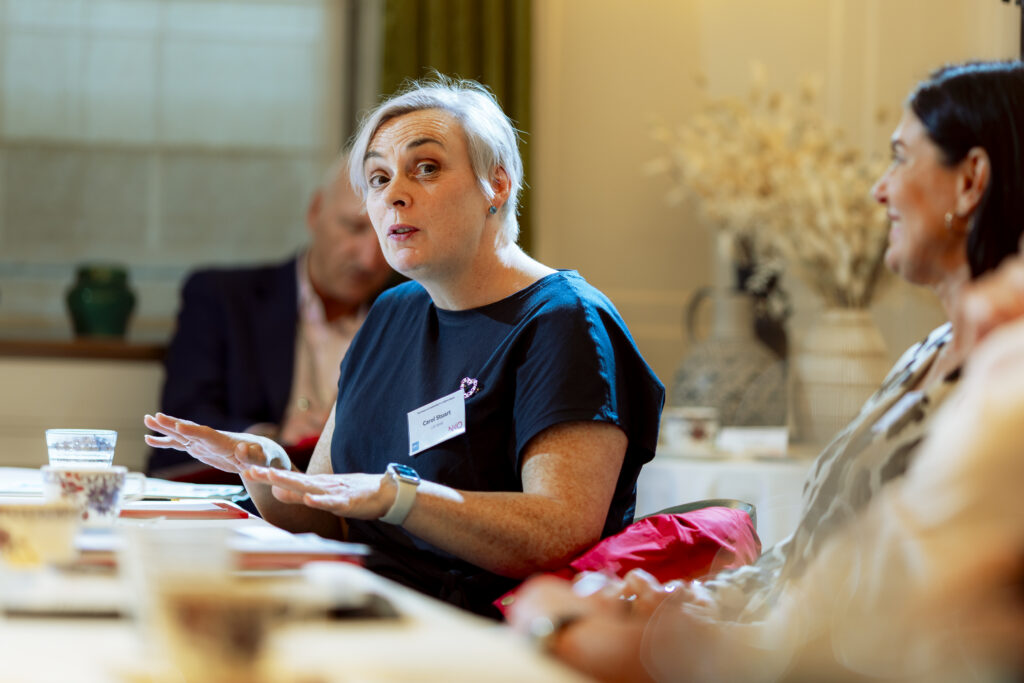
Bec Lilley: It’s important to start with a really clear set of principles around how AI is going to be used, so that everyone is clear. GDPR is a big consideration for our business. Governance is very important, as is making sure that everything is checked.
Claire Lock: Agreed, a standard practice and expectation must be established with parameters in place, ensuring safe and consistent use. Education is key and our approach with AI is to review, adapt and enhance current practices, but it is a learning curve for employees and businesses too. The mindset has to be that it’s a tool – it doesn’t dictate.
Monika Holliday: It has tremendous potential, but we need to check it for efficacy, balance and quality.
Michael Faulkner: It’s not a case of trying to stay ahead of AI, because we never will be able to. It pays to adopt a more relaxed approach, one that allows us to be more open to learning and working with it organically.
ARE YOU CURRENTLY DEVELOPING LEADERS TO BE ABLE TO TAP INTO THEIR EMOTIONAL INTELLIGENCE?
Andy Savage: Emotional intelligence is very individual, everyone has different levels of EI and strengths or weaknesses. It’s about creating an environment, where people feel comfortable to speak up and equipping managers with the tools to inspire and engage. We’re on a journey and it’s interesting to see a generational change in our leadership responding to the shifts in employee expectations.
Gudrun Neumann: Paradoxically, lockdown and virtual meetings seemed to open up people’s lives – we have come to know their children, pets and hear of the challenges and celebrations in their lives. We have recently embarked on an employee engagement and strengths programme and it’s interesting to see how sentiments around empathy and care have been elevated in importance.
Sarah Fox: Similarly, we have also run a strengths-based programme, initially with our leadership team, but now more than 90 colleagues have taken the assessment. What it’s given us is a common language, people have a greater understanding of their own behaviour, what their own strengths and talents are and whether they are task- or relationship-orientated. But more importantly, they are learning about the people they are working with and it is helping to build stronger teams.
Claire Lock: In the past, leadership was often predicated on technical capability and dynamism. But there is no doubt that the answer to collaboration and diversity of thought is EQ and all of the qualities within; pragmatism, transparency and the courage to admit that you don’t have all the answers.
Bec Lilley: Psychometric tests open up the door to understanding people’s strengths and motivations and are often as revealing to the individual as they are to the company. Used in the right setting for the right reasons, trait versus type-based tests are a fantastic tool, in selection and for development, as well as succession choices. EQ is revelatory, because it is on another level from qualifications and experience sets and reveals self-awareness and relationships and connections. It’s an ongoing assessment narrative that informs both employer and employee. Understanding ourselves is at the heart of leadership.
Nick Wright: A leader or manager may score a relatively low EQ, but if you can articulate that to a team and show that awareness, it helps build relationships and understanding. It reflects that significant shift from the typical top-down, predominantly male leader with all the answers, to relationships based on trust, transparency and maturity.
Heather Garrett: It’s down to building the right relationships and connecting properly with people and understanding individual preferences. It’s about reading people and understanding them. Developing leaders is not easy – and a leadership role is not for everybody, it’s very much about individual context, but for me, the trust model is fundamental.
Sarah Fox: It is also important to be humble and not assume that as a leader, you’re always going to be right. It takes courage to express that and to give yourself permission to be a bit vulnerable sometimes. Honesty builds trust.

Glenn Milton: Constantly, adaption is key and I can see further evolvement for leadership ahead. Connection with people is more important, meaning leaders who are accessible is the only way we’re going to be able to manage effectively in a fast-changing environment in a hybrid world.
Monika Holliday: I think it’s going to be so much harder to be a leader in the future, but listening, individuality and putting the ego to one side is an important foundation to move from ‘me’ to ‘we’. The more global we become, the more AI and tech-orientated, the more we have to promote the human factor.
Gudrun Neumann: What makes great leadership hasn’t changed that much over the last few decades. Those qualities that we have discussed existed in the very best leaders in the past and I think we can take great comfort from that.
Andy Savage: Where there is rising instability and unpredictably, we need leaders who are prepared for the next big shock – be it geopolitical unrest, financial crisis, climate crisis and indeed war – how leaders react and adapt will be essential.
Nick Wright: Leadership I think is contextual and success depends on a set of circumstances. Like in the world of sport, coaches can have success in one team but not in another, for many reasons, including culture. It plays out in a more concentrated way in a sporting environment. So how we identify and develop leaders matters and while the basic tenets still apply, the nuances in the criteria have changed.
Carol Stuart: We need to accept that there is no one model of leadership and being an authentic and agile leader is essential.
Claire Lock: Authenticity builds robust leadership capability and showing vulnerability is a fine balance, but a necessity. Encouragingly, we now have a level playing field, enabling a wider diversity to strive for leadership in their careers and technology, AI, automation, data and system integration will free up our time, to be focused on where we can really make a difference.
Michael Faulkner: Crystallise what we’ve been talking about today and it comes down to the fact that, the basic elements of effective leadership still apply, listen and manage your ego. EQ is one of the biggest capability gaps and equally, it is also one of the biggest opportunities to gain competitive advantage.
Bec Lilley: It’s understandable that leaders are distracted by the tensions caused by external and internal factors and the fast change that technology is driving. But tech is an enabler and along with a culture for collaboration and diversity of thought, we can look beyond those tensions, move from trying to decide between short-term shoring up vs long-term planning. The future should not be a distraction of tech automation vs human intervention, there is a lot of ambiguity, but I believe navigating through will be a balance of technology, human ingenuity and EQ.
Please do visit our partner’s website to learn how they can positively impact your Leadership strategy:
NKD.CO.UK
